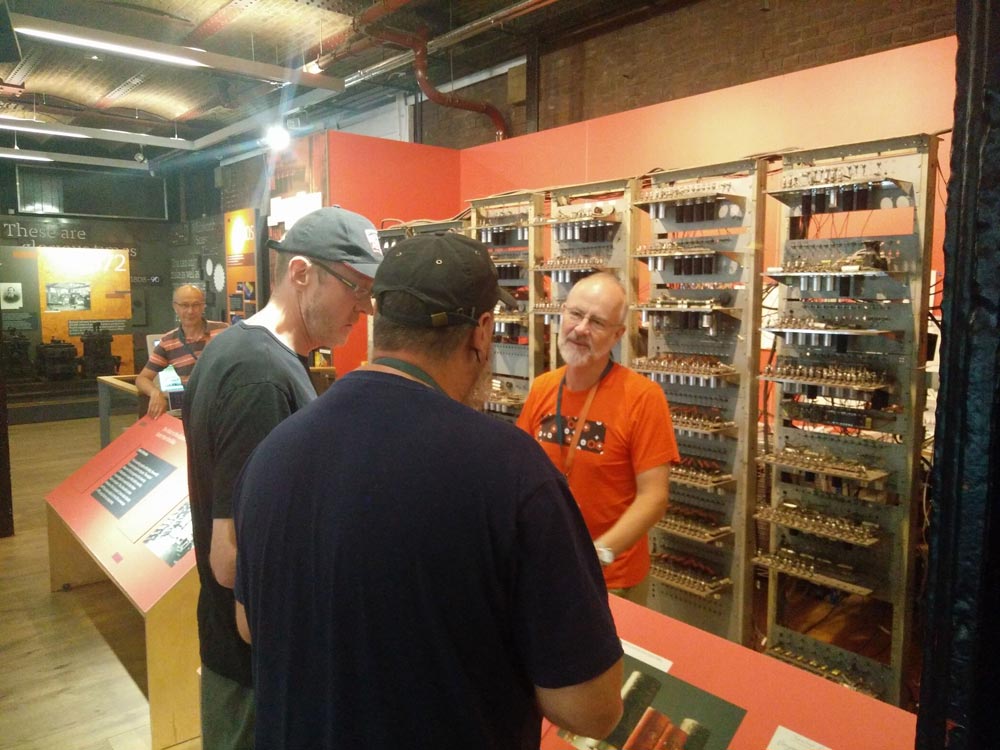For years—probably decades—I’ve been fascinated by the vast range of exhibits in the museum. I could happily lose myself for hours just gazing at them, especially the working ones. Unfortunately, my family have usually had to move me on.
So, as soon as I had time on my hands, I enquired about becoming a volunteer. I’d spent all my working life designing and working with computers, so it was natural that I’d join the team working with ‘Baby’. Although, if I’m honest, I’d be happy working in almost any area of the museum.

Science Museum Group © The Board of Trustees of the Science Museum
Baby is the affectionate name given to our replica of the Small Scale Experimental Machine. It was the first ‘computer’ in the world to run a program stored in its memory. It was built by academics at the University of Manchester to prove that such a thing was possible with the technology of the day. At 11.15 on 21 June 1948, they proved that it was, and ‘software’ was born.
Our exhibit was recreated 20 years ago by a team of enthusiasts using original parts to mark the 50th anniversary in 1998 and it’s been running regularly since then. The name Baby probably refers to its role in the birth of computing. It certainly doesn’t refer to its size. Components in 1948 were not small by modern standards.
I’ve only been a volunteer at the museum for a few months so I’m still new to this. I find myself being surprised by the range of backgrounds, knowledge and interests of our visitors.
One day a couple of weeks back, I was by myself at the Baby exhibit. It was a lovely day outside but a relatively quiet day for visitors. That can sometimes be an advantage, because everyone has a bit more time to look and think, and hopefully, to learn.
We’re there to try to explain about Baby, to put the achievement of the people who built it into historical context. To explain as much of the technical detail as the visitors are interested in. And, of course, to say “Wow, isn’t it big and old!” to the younger ones.
But it seems that once they have heard from my side of the barrier, many of the visitors have a story to tell. There’s something about these impressive exhibits that sparks a thought, or a memory, and they are happy to share it with us. And I shamelessly enjoy that. I also learn things.
So, for instance on that quiet day, I learned:
- That the world’s first rail locomotive was built by Trevithick to pull a load of trucks and men near Merthyr Tydfil for a wager.
- That a 6,000-year-old carved wooden post was recently uncovered in the Rhondda valley during the building of a windfarm.
- That the National Hockey League isn’t strictly national, and they don’t play field hockey. They play ice hockey and combine teams from the US and Canada.
- That computers used to be the size of rooms. In fact, near the Baby exhibit is part of the Ferranti Mark 1 that it inspired. And that was the size of a large room.
- That a teacher of software is considering using our online simulator to give her students the challenge of programming the original ‘reduced instruction set computer’.
- That the valve radios in military vehicles were considered so fragile that the valves were removed and packed in cotton wool.
I had a chat about mass spectrometers and then happily directed the visitor to the Museum’s mass spectrometer just around the corner.
I’ve talked about steam engines in general and the one driving Tower Bridge in particular. It seems as if everyone loves the steam engines in the museum.
Younger visitors have never seen valves before, so it’s interesting to show them the ‘clever lightbulbs’ that we use. At the other end, I’ve had memories of old valves from an ex-WRNS radio operator, and recollections of the 120-volt batteries and accumulators that needed recharging at the local garage for the household radio.
So, if you are passing, drop in and say hello to Baby. Did we tell you she’s having a birthday?
And also, please say hello to us on the other side of the barrier!